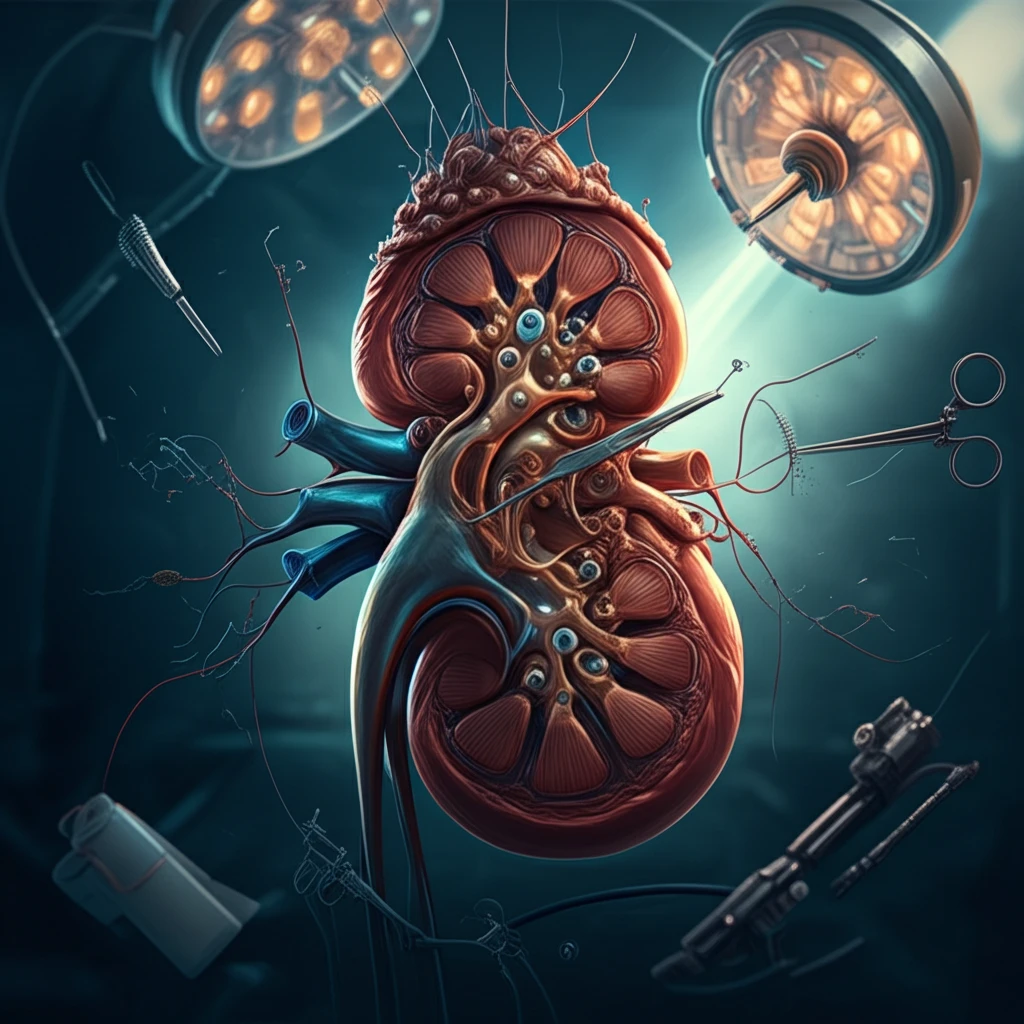
Beyond the Scalpel: Exploring the Latest Hemostatic Techniques in Laparoscopic Nephron-Sparing Surgery
"Discover how cutting-edge hemostatic aids are revolutionizing kidney surgery, minimizing blood loss and improving patient outcomes."
Partial nephrectomy, the surgical removal of a portion of the kidney, is a cornerstone in treating small renal masses. The shift towards laparoscopic techniques in this area reflects a broader trend toward minimally invasive procedures, appreciated for their reduced recovery times and smaller incisions. However, the kidney's rich vascularity presents a significant challenge: managing bleeding during these procedures is critical to avoid complications.
Controlling bleeding and addressing any injuries to the kidney's collecting system (calyceal injuries) are technically demanding aspects of laparoscopic partial nephrectomies. These challenges have spurred the development and refinement of various energy sources and hemostatic agents, all aimed at minimizing blood loss and optimizing patient outcomes. This article looks at these tools available to reduce bleeding.
Achieving secure renal parenchymal hemostasis is paramount. Concerns about hemostasis have limited the use of Laparoscopic Partial Nephrectomy (LPN). Precise suture ligation followed by a tight hemostatic reapproximation of the renal parenchyma, with the renal hilum cross-clamped, is common.
The Arsenal of Hemostatic Aids

The initial response to bleeding during laparoscopic surgery often involves direct pressure applied with specialized instruments or suction. Techniques like laparoscopic suturing, clips, and vascular staplers provide further control. Here's a look at some advanced methods:
- Double-Loop Tourniquet: Aims for regional vascular control but can be unreliable in larger human kidneys.
- Argon Beam Coagulator: Enhances visualization by blowing away blood but is insufficient for larger vessels.
- Ultrasonic Shears: Allow for tumor excision without vascular occlusion but can cause tissue charring.
- Water (Hydro) Jet Dissection: A new technology in dissecting tissue, vessels, and organs during operation.
The Future of Hemostasis in Kidney Surgery
Laparoscopic nephron-sparing surgery is an important method, especially with more and more incidental renal masses showing up on scans. Deciding on the best tools and how to handle the hilum should depend on what the surgeon knows and is comfortable with, as well as how complex the case is. It's clear that using hemostatic agents and tools doesn't mean you can skip good suturing techniques. The best way is likely a mix of manual suturing and these newer technologies.
